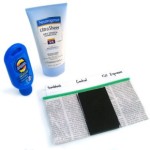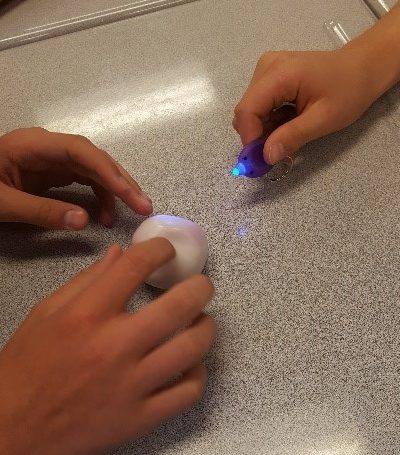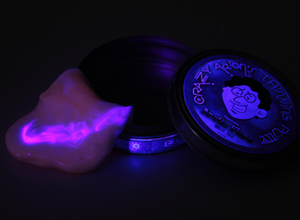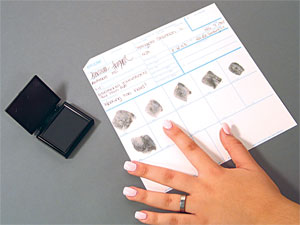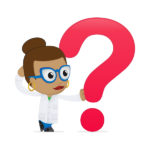 Teaching about ultraviolet light is always fun. Read on for ideas you’ll want to try in your classroom. We have compiled in-class activities, discussion ideas and do-it-yourself projects that will have your students GLOWING with excitement as they explore the hidden world of UV light.
Teaching about ultraviolet light is always fun. Read on for ideas you’ll want to try in your classroom. We have compiled in-class activities, discussion ideas and do-it-yourself projects that will have your students GLOWING with excitement as they explore the hidden world of UV light.
Let us know how these ideas worked! If you have a favorite lesson or activity on ultraviolet light, please share it with us in the comments below.
Be a Smart UV Consumer!
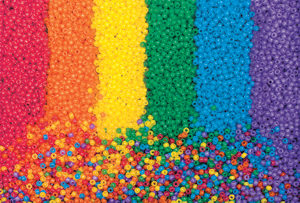 Our UV-detecting beads are among our best-selling products—and now we carry them in green, too! They’re used in all types of educational settings as well as at health fairs, cancer screening information booths and more.
Our UV-detecting beads are among our best-selling products—and now we carry them in green, too! They’re used in all types of educational settings as well as at health fairs, cancer screening information booths and more.
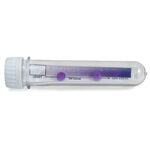 Whether your students wear them on a simple bracelet or use our UV Outside Detectors, these beads offer an unforgettable lesson in exposure to UV radiation from the sun.
Whether your students wear them on a simple bracelet or use our UV Outside Detectors, these beads offer an unforgettable lesson in exposure to UV radiation from the sun.
Our Teacher-in-Chief, Tami O’Connor, has written an engaging UV Radiation Activity blog which offers step-by-step instructions for teaching your class about the dangers of invisible UV rays using a few simple materials—a piece of newspaper (with text), a plastic snack bag, sunscreen, black construction paper, tape, and a large poster board. Definitely worth a look!
We’re delighted that the Stanford SOLAR (Solar On-Line Activity Resource) Center, in conjunction with NASA and the Learning Technologies Channel, has developed a series of lesson plans that incorporate our UV-detecting beads in exciting ways. They have extensive lessons for all grade levels. If you’re interested in making your ultraviolet light lessons really resonate—or should we say GLOW?—you’ll want to take a look at these free resources.
42-page lesson plan for grades 2-4:
click here
34-page lesson plan for grades 5-8:
click here
22-page lesson plan for grades 9-12:
click here
Ultraviolet Light Scavenger Hunt
Phosphors (substances that give off light—or fluoresce—when they are exposed to UV light) are all over the place. How many phosphorous items can your students find in the classroom or around school?
Some phosporous items are natural (our teeth and fingernails, for example) and others are man-made—for instance, many paints, fabrics, and highlighter markers. There are even glow-in-the-dark hair gels and no-pop bubbles!
One of our EI staffers took home a UV flashlight and was amazed at the common household items that fluoresced—including her own skin! Read about it here. Inspired by the blog, another staffer shined the UV flashlight around her home and was amazed at what she found! (Note: toothpaste and cleaning products with brighteners fluoresce under UV light.)
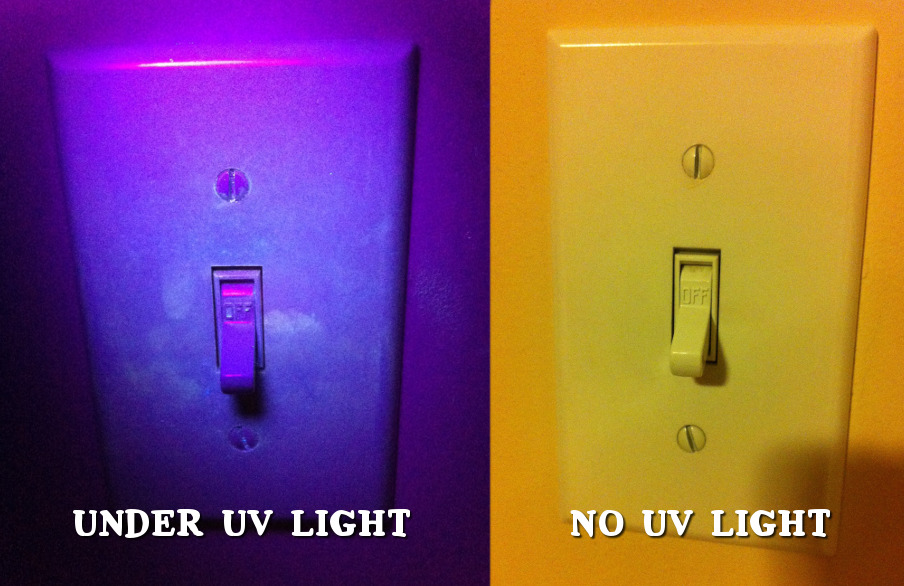
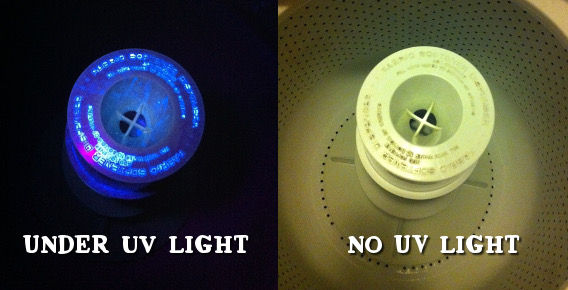
UV Sensitive Non-Newtonian Fluid?
What can your students do with a putty that fluoresces under UV light… and bounces… and snaps? Read our “Wonder and Curiosity in a Can” blog for a fantastic classroom activity idea from Nancy Foote, an award-winning middle school Physics teacher. She simply placed a can of UV Sensitive Putty on her classroom’s curiosity table and… voila! Science!
Be a Black Light Detective
UV flashlights have many practical and fascinating applications. They can make the invisible visible or isolate one specific substance from everything around it. When you think about it, the applications are potentially endless! For example:
♦ Appraisers use them to detect forgeries of antiques. Many paints today contain phosphors that will glow under a black light, while most older paints do not contain phosphors.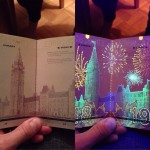
♦ Law enforcement officers identify counterfeit money with UV lights. The United States and many other countries include an invisible fluorescent strip in their larger bills that only shows up under a black light. Certain countries have added UV-sensitive artwork to their passports to help prevent forgeries. To watch a video of Canada’s UV-sensitive passport, check out EI TV here.
♦ Repairmen use UV flashlights to find invisible leaks in machinery—they inject a little fluorescent dye into the fuel supply and illuminate it with a black light. For example, they might detect an invisible air conditioner leak by adding fluorescent dye to the refrigerant.
♦ Any self-respecting spy needs a UV light to reveal secret messages, of course! With our Invisible Ink Spy Pen, you can add your own secret codes or designs to any document.
♦ Amusement parks use them to identify invisible fluorescent hand stamps for readmission.
♦ Forensic scientists use UV light to analyze crime scenes. To pick out fingerprints, for example, they often dust with fluorescent dye under a black light. Black lights can also identify bodily fluids that naturally fluoresce. (If you’re interested in CSI-themed science, visit our Who Did It? section.)
Do-It-Yourself UV-Sensitive Box Camera
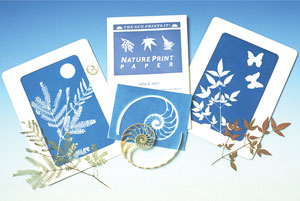 Your students can make a UV-sensitive box camera with nothing but a cardboard box, two lens, some tap water and a sheet of our Nature Print Paper.
Your students can make a UV-sensitive box camera with nothing but a cardboard box, two lens, some tap water and a sheet of our Nature Print Paper.
This whole class science project allows students to realize that ultraviolet radiation might be invisible but it’s powerful enough to leave its imprint on paper—or on our skin if we forget to use sunscreen.
Instructions are available here.
Glowing Tattoo, Anyone?
With some Glo-Germ lotion and a cotton swab, you can create awesome temporary “tattoos” on your students. A great activity for any time of year, but especially fun around Halloween!
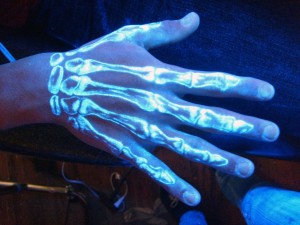
Edible Experiments
Anything that glows in the dark is already cool, but how about EDIBLE glow-in-the-dark experiments? The secret, we’ve learned, is tonic water, which contains quinine.* Like other fluorescent substances, quinine absorbs ultraviolet light and then re-emits it. The light emitted has a longer wavelength than the one absorbed, which makes the light visible. When you substitute tonic water for regular tap water in a recipe, it adds the quinine which adds the glow.
Other foods that glow naturally include mint, bananas and even honey. Why not organize a blacklight classroom feast? Students will love using the scientific method to determine which foods give off the brightest glow!
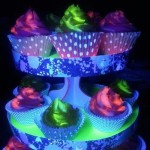
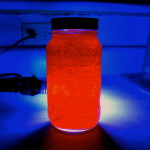 A few of our favorite recipes:
A few of our favorite recipes:
Glow in the dark Jello
Glow-in-the-dark cupcakes
* Because it is an unusual ingredient, and many people have not heard of quinine allergy, a footnote seemed justified. Tonic water contains quinine, which causes an allergic reaction in a small percentage of people. Drinking tonic is no more inherently risky than eating other foods with allergens like nuts, meat, fish, eggs, wheat.


